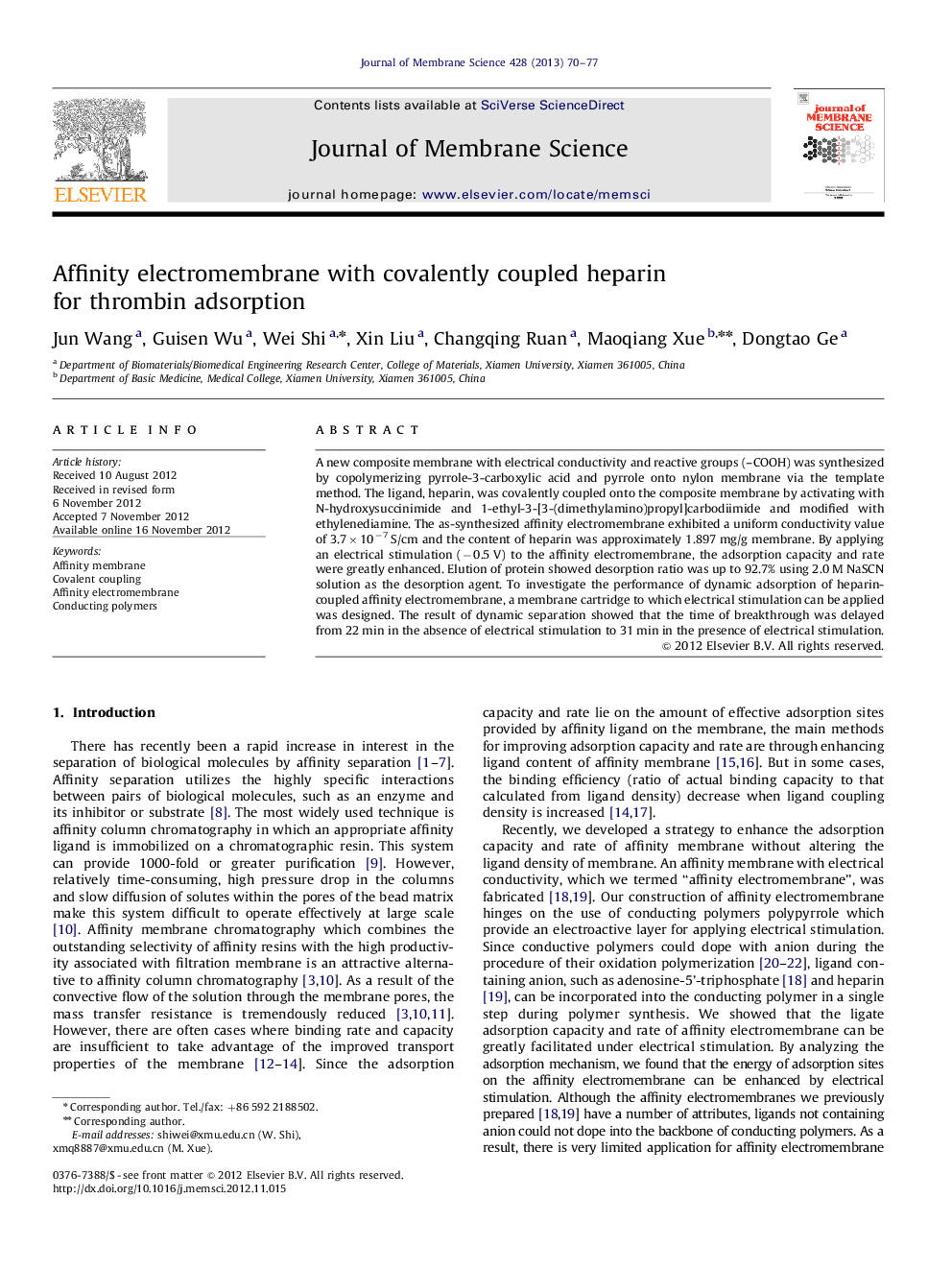| Article ID | Journal | Published Year | Pages | File Type |
|---|---|---|---|---|
| 634596 | Journal of Membrane Science | 2013 | 8 Pages |
A new composite membrane with electrical conductivity and reactive groups (–COOH) was synthesized by copolymerizing pyrrole-3-carboxylic acid and pyrrole onto nylon membrane via the template method. The ligand, heparin, was covalently coupled onto the composite membrane by activating with N-hydroxysuccinimide and 1-ethyl-3-[3-(dimethylamino)propyl]carbodiimide and modified with ethylenediamine. The as-synthesized affinity electromembrane exhibited a uniform conductivity value of 3.7×10−7 S/cm and the content of heparin was approximately 1.897 mg/g membrane. By applying an electrical stimulation (−0.5 V) to the affinity electromembrane, the adsorption capacity and rate were greatly enhanced. Elution of protein showed desorption ratio was up to 92.7% using 2.0 M NaSCN solution as the desorption agent. To investigate the performance of dynamic adsorption of heparin-coupled affinity electromembrane, a membrane cartridge to which electrical stimulation can be applied was designed. The result of dynamic separation showed that the time of breakthrough was delayed from 22 min in the absence of electrical stimulation to 31 min in the presence of electrical stimulation.
Graphical abstractFigure optionsDownload full-size imageDownload high-quality image (160 K)Download as PowerPoint slideHighlights► Composite membrane with electrical conductivity and reactive groups was synthesized. ► Affinity electromembrane on which the ligand was covalently coupled was developed. ► Membrane cartridge to which electrical stimulation can be applied was designed. ► Breakthrough time was greatly delayed in the presence of electrical stimulation.
